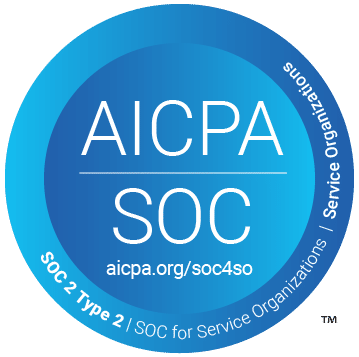Healthcare professional licensing and certification is controlled by states and local jurisdictions. All healthcare professionals must apply for licensure by the state (s) in which they intend to practice medicine. In 2020, about 14.3 million U.S. healthcare workers were subject to licensing, accounting for 28.33 percent of the entire licensed workforce, according to recent research. The states establish certain criteria for specialized training and education, as well as professional conduct which must be met prior to licensure being granted. Generally, applicants must possess a certain academic degree or receive a passing grade on a state-administered examination to be granted licensure. While there are many similarities across states regarding their licensing standards, there remains no national licensing process that allows healthcare practitioners to practice fluidly across state lines, other than certain reciprocity agreements among states, such as the Nursing Licensure Compact which is an agreement between states that allows nurses to have one compact state nursing license that gives them the ability to practice in other states that are part of the agreement. Notwithstanding a trend toward uniformity of requirements among physician licensing boards, current licensure processes require physicians to complete individual applications for each state where they intend to practice medicine in any form, including telemedicine.
Understanding the Differences among Licensure, Certification & Accreditation
Licensing differs slightly from certification in healthcare. With regard to certification vs. licensure, certification can be either a prerequisite to obtaining a license or an alternative depending on the type of healthcare role. Certification and licensure are granted by states. Accreditation is another form of credential commonly referenced in the industry but only applies to facilities. These can include -hospitals, nursing homes, urgent care centers, or any other kind of healthcare facility that provides care. The primary goal of accreditation is to gauge a healthcare facility’s ability to live up to predetermined industry standards set by highly respected healthcare accrediting organizations. Accreditation is when an independent, professional organization acknowledges that a healthcare organization has met or surpassed their standards. These organizations are not affiliated with the federal government or any state governments. The Joint Commission and NCQA (National Committee for Quality Assurance) are two examples of independent accrediting organizations which sets stringent quality standards for the hospitals and heath plans respectively.
Understanding Stated and Federal Interdependencies
Federal programs, such as Medicare, rely on state licensing processes to ensure that providers who enroll to become Medicare providers meet a high standard of professional competence and conduct. However, enrollment as a Medicare provider also requires that applicants submit to a rigorous review process to assure that provider qualifications as represented in the enrollment process are accurate. For managed care providers, CMS relies on MCOs to enroll providers who meet CMS standards and then audit providers periodically to ensure that their billing and professional conduct complies with both state and CMS requirements.
Federal programs and the OIG also rely on states to police Medicaid providers to ensure that professional misconduct or criminal activity is identified, addressed and reported to the OIG that can assess whether exclusion is required. State Medicaid Fraud Control Units (MFCUs) are required to timely report convictions or state actions taken against healthcare professionals; these reported actions account for the majority of exclusions imposed by the OIG. Therefore, the OIG is highly dependent upon the state MFCUs, which are largely financed by the OIG, to provide the information required by the OIG to assure that Medicaid providers convicted of criminal behavior or serious professional misconduct are excluded from participation in federal programs. The Affordable Care Act, Section 6501, created an additional interdependency among the states and the OIG by the requirement that any Medicaid provider excluded from one state’s Medicaid program is also barred from participation in any other state’s Medicaid program. Therefore, the state and the federal healthcare fraud regulators cannot successfully address criminal activity without this highly symbiotic relationship.
The Impact of the Pandemic on Licensure
During the pandemic, the federal government enacted a series of COVID-19 waivers that provided hospitals and health systems with critical flexibilities to manage the impact of the public health emergency. Hospitals and health systems used these new tools to increase capacity, expand testing and telehealth capabilities, and mitigate workforce challenges. These federal waivers removed specific practice limitations on nurse practitioners that are more restrictive under CMS rules than under state licensure as well as removed certain professional licensure barriers for states wishing to allow out-of-state providers to perform telehealth services. Also, states modified professional licensure standards to expedite access to out-of-state medical professionals willing to work outside of their state of licensure. As a result, a nurse licensed in one jurisdiction could more easily apply for work in another state where medical professionals were in short supply.
Certain organizations, such as the American Hospital Association (AHA) , has lobbied heavily to retain these flexibilities post-pandemic because care access has been significantly improved by the relaxation of limitations and restriction on the healthcare industry. The AHA specifically called out a number of pandemic-driven telehealth capabilities that they recommend should be continued after the end of the pandemic:
- Permanently eliminate the telehealth originating and geographic site restrictions for all telehealth services
- Permanently allow rural health clinics and federally qualified health centers to continue to serve as distant sites for all telehealth services beyond mental health services
- Permanently expand eligibility to deliver telehealth services to certain practitioners, such as respiratory therapists, physical therapists, occupational therapists and speech language therapists
- Permanently allow providers to deliver all Medicare telehealth services (beyond mental health services) via audio only communications when medically appropriate
- Permanently allow professionals who provide hospice and home health services to do so via telehealth and grant these professionals the ability to meet face-to-face requirements via virtual visits
- Permanently allow direct supervision through telecommunications technology for specified services (can be achieved through regulation)
With regard to telemedicine, certain states are taking action to permanently allow telemedicine services to be rendered across state lines. The Federation of State Medical Boards (FSMB) has compiled a list of U.S. states and territories modifying requirements for telehealth in response to COVID-19. More than 20 states and jurisdictions now allow, permanently or on a long-term basis, health care providers licensed in another jurisdiction, in good standing and not subject to current or past disciplinary actions to practice telemedicine in their states.
Conclusion
The licensure of healthcare professional and entities by states is increasingly influenced by federal standards that create greater uniformity among the jurisdictions. As shown by the FSMB table referenced above, the states are also being influenced by the federal waivers related to telemedicine. Federal laws, such as the False Claims Act and HIPAA, also drive commonality with regard to minimum standards of practice and conduct. However, the states ultimately control the process for licensure and the inclusion state-specific standards as appropriate. CMS and OIG rely on state regulatory bodies both to ensure that providers seeking to serve federally-funded patients meet certain professional standards and to report bad actors, and the states in turn rely on the OIG and CMS to identify providers who cannot participate in federal health care programs. In large part, this inter-dependency has created a complex but largely successful collaboration to encourage quality care and to remove substandard providers from federally-funded programs.


































